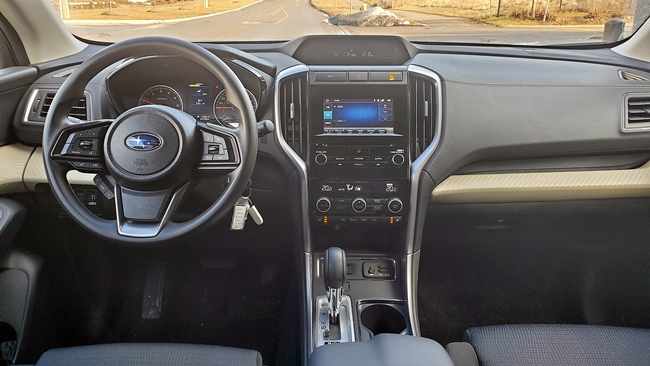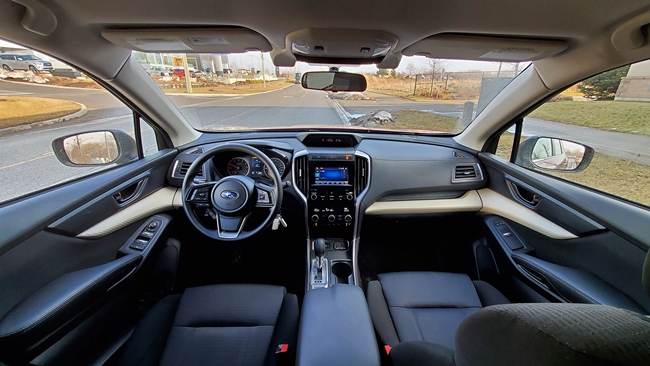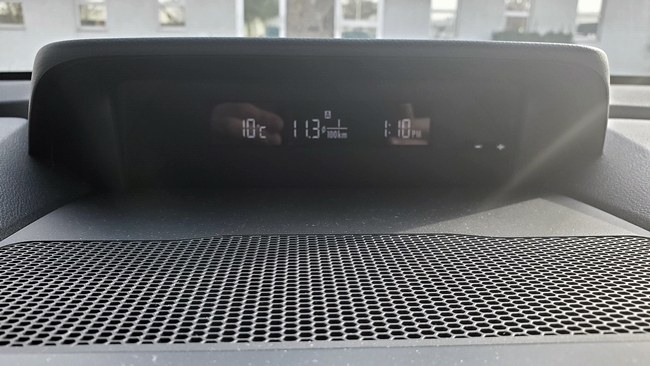For a change, let’s focus on the basics, shall we?
In order to review a new vehicle, auto journalists rely on the automakers directly in most cases to provide rides from their managed press fleets. These fleet offerings tend to be the newest models that the automaker is looking to receive media coverage for, and usually they let us drive their top trim level so we can see all the bells and whistles they have to offer.
But every once in a while, we get the chance to get behind the wheel of a base model variant. Maybe it’s to showcase a low price point, or it’s to demonstrate that even at an entry level offering, the vehicle has plenty to offer. And for as much as it’s nice to be driving around in another top-end tester, there is something uniquely appealing as well about being able to review something that’s as basic as you can get.
Case in point is my chance recently to review a 2020 Subaru Ascent, which was available for review in their base Convenience trim level. The Ascent is a mid-sized, 3-row crossover SUV that was first launched as a 2018 model. The Ascent filled a hole in the Subaru model line up in North America following the departure of the Tribeca back in 2014.
Competition for the Ascent comes from a number of popular models such as the Nissan Pathfinder, Chevy Traverse, Kia Telluride, Hyundai Palisade, Toyota Highlander, Honda Pilot, Volkswagen Atlas, Ford Explorer and Mazda CX-9. In such a crowded and popular segment many models are trying to showcase many of their newer technologies that are usually found at the top end. But it would seem that just as important is how well equipped they are from the base model on up.
For the Ascent, even from a base model it has a few things going for it. All Subaru’s sold in North America come with their standard Symmetrical Full-Time AWD system. While I remain unconvinced that every single vehicle in their line up needs to have a full-time all-wheel drive system as standard, it nonetheless has plenty of appeal for customers, especially those who live in colder climates.
Also found on all Subaru trims is their Standard EyeSight driver assist technology. This easily recognizable driver safety system uses 2 cameras which are mounted just below the roofline on the front windshield. The system monitors activity on the road ahead, helps to identify potentially hazardous situations and provides assistance to the driver when needed most. It incorporates several different advanced active-safety systems such as Adaptive Cruise Control, Pre-Collision Braking, Pre-Collision Throttle Management, pre-collision brake assist, lead vehicle start alert and Vehicle Lane Departure and Sway Warning, and Lane Keep Assist. To have this amount of safety technology found on a base model is indeed noteworthy.
Once you start moving beyond these Subaru staples, the Convenience trim level begins to show its more basic attributes compared to its higher trim level siblings. To start with, there are fewer colours to choose from since apparently it costs more if you like your ride in the Abyss Blue or Cinnamon Brown Pearl tones as well as Tungsten Metallic. If you like chrome on your exterior, you’ll need to upgrade and generally the outside appearance won’t look as flashy.
Inside the base model Ascent you’re looking at a 6.5 inch centre screen compared to 8 inches in upper trims. You’ll have to head up a couple trim levels to get GPS navigation and your sound system will be good but more to the basic side. All trim levels fortunately are compatible with both Android Auto and Apple Car Play, plus you’ll have access to Subaru’s Starlink smartphone integration system.
Perhaps what stood out for me most was the fact that ignition at this trim level still used a physical key inserted into an ignition switch as opposed to the more common push button start with Key FOB. I can’t even count the amount of times in my week driving the Ascent that my hand reached for a start button only to realize that I needed to go old school with a key to get it started.
Seats in the Convenience trim are cloth covered. The 2nd row offers bench seating instead of upgraded Captain’s chairs, which gives room for 8 people instead of 7. As a side note it always seemed funny in 3 row vehicles that you pay more to get less seating, albeit seating that’s upgraded. For the young ones seated in the 3rd row (adults won’t fare well here), they will need to make sure their devices are fully charged because USB charge ports on the base trim are only available in the front and second row. If you really need 3rd row charge ports, you’ll need to move up the trim level.
Heated front seats are fortunately standard across all trim levels, but you’ll need to wear your gloves in winter as a heated steering wheel is an upgrade. You’ll also need to keep your hands free if you need to open the rear liftgate since the base model is the only trim level without a powered version.
All trim levels of the Ascent come with the same engine, a 2.4L 4 cylinder turbocharged Boxer engine, which is paired to a CVT transmission. Power output across the board is 260 horsepower and 277 lb-ft of torque. This vehicle category is notorious for engines that do enough but not much more and the Ascent falls in line with the rest of its competitors here.
Combined fuel economy according to Natural Resources Canada is set at 10.4 L/100 KM or 22.6 US MPG. In my own driving I didn’t manage to hit this mark, but I’ll factor in cold weather as well as more city driving than the combined rating factors in for the roughly 10% increase over stated.
While you aren’t getting a bare bones shell of a vehicle here, there certainly are concessions one would need to accept if the base model Ascent is where you are looking. Most of the time price would be a major determination as to why the base is where you want to be, and for the Ascent the starting price isn’t too bad. In Canada, the Ascent Convenience trim as it is known starts at $36,695, while in the U.S. the base model Ascent is $31,995. When stacked against its competitors it falls basically right in line with base model editions of the Nissan Pathfinder and Chevrolet Traverse. But it stands several thousand dollars below base model versions of the Kia Telluride, Honda Pilot and Ford Explorer so there is clear value at hand.
If a practical, functional, safe and generally well designed 3 row SUV is all your looking for, this base model Subaru Ascent is certainly worth taking out for a test drive. It won’t be the fanciest ride you’ve ever been in, but it will get you there and back with little worry and a couple extra bucks in your bank account just for good measure.





10.4 L per 100 km? I teach on an aircraft that does better at 8L per 100 km, DA40 NG) but then it only has 4 seats.
Not exactly environmentally friendly but a nice ride!